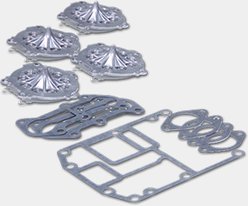Barry Stokes, the host of “Let’s Fish TV,” has been fishing since he was 5 and is a former bass tournament fisherman with an impressive record. When he’s not fishing for bass, Stokes sometimes takes his Mercury-powered Blazer bass boat to places like the salt marshes of Texas and Louisiana to sight-cast for redfish.
Because of his interests in both freshwater and saltwater fishing, the Mercury Pro Team member often gets asked the question, “Can you use a freshwater boat in saltwater?” According to Stokes, the answer is yes, provided you perform a few cleaning procedures when you’re finished.
The task is to rinse away corrosion-causing saltwater before it has a chance to cause any rust or degrade your equipment. To help make sure you hit all the key parts and get the job done right, here are five steps Stokes recommends for a post-saltwater cleanup. Give them a look, then watch the video below for more details.
1. Wash the trolling motor – If your boat has a trolling motor, the first thing you want to do, either at a car wash or at home, is pressure wash the entire motor, starting around the prop and powerhead and continuing up the shaft, making sure you don’t neglect the bracket. If your trolling motor has a foot pedal, only spray water down onto the foot pedal. Do not spray it on the underside, where the force of the water could damage wires or dislocate other parts.
2. Wash metallic items and accessories – Spend some time making sure the detail elements around the boat are clean – particularly anything metallic. Include the cleats, the deck, cockpit and seats. Clean the dash panels and instruments, too, but avoid a direct shot of high-pressure spray around sensitive buttons and electrical devices. You might need to use a standard garden hose or rinse by hand for some of these areas. Also, don’t forget the livewells, which have had saltwater in them, as well as the anchor and/or a shallow-water anchoring system if you have one.
3. Wash the hull – Next, direct the pressure washer to the outside of the boat and clean the gunwales, sides, transom and hull underneath.
4. Wash the trailer – Make sure to thoroughly wash the trailer since it was also dipped in saltwater. Pressure wash the tires, wheels, brakes and brake pads, but avoid hitting the hub with a high-pressure hose as it can affect the bearing lubrication. Don’t forget to hit the frame, bunks, dolly and winch up front.
5. Clean and flush the outboard – Now, it’s time to clean the engine. After washing down the cowling, lower unit and prop, it’s really important to thoroughly flush the insides to remove any remaining saltwater. Most Mercury outboards come equipped with a built-in flush port that allows you to simply attach a garden hose and flush it out. Stokes suggests flushing it for at least 15 minutes. With the Mercury system, there’s no need to run the engine to flush it. As always, consult your engine owner’s manual for the proper procedure for flushing your specific engine model.
If you follow these few maintenance tips, you can enjoy the salt just as much as freshwater, while keeping your boat in top shape.
For more fishing info from Barry Stokes at “Let’s Fish TV,” check out LetsFishTV.com or the show’s Facebook and Instagram pages.
































